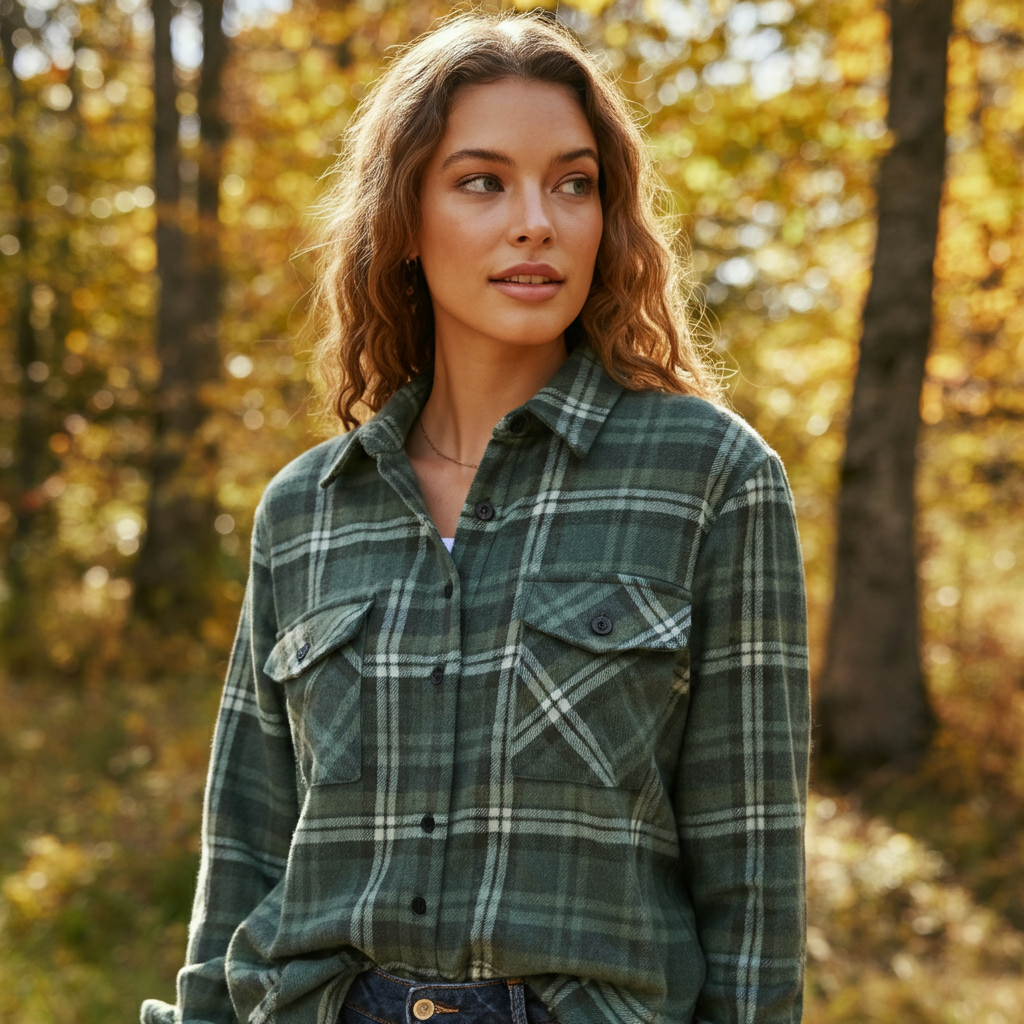Plaid shirts have been a wardrobe staple for decades, straddling the line between rugged practicality and fashionable statement. Whether you associate them with lumberjacks or ’90s grunge icons, plaid shirts have a rich history behind their patterned charm. But what makes these shirts so enduring in style and culture? And how do they differ from flannel shirts? Let’s untangle the threads of plaid shirts and explore their cultural significance, stylistic evolution, and ways to incorporate them into your wardrobe.
What is Plaid in Shirts?
To start, let’s clear up a common misunderstanding—plaid is not a fabric, but a pattern. This iconic crisscrossed design has origins in Scotland, where it goes by the name tartan. Tartan patterns have been made for centuries and were deeply tied to Scottish culture. Each clan (family group) had its own unique tartan design, serving as a badge of identity.
Interestingly, the word plaid originally referred to a specific tartan garment. Worn in 16th-century Scotland, this was a long piece of tartan fabric draped over the shoulders and tied at the waist. Over time, the term plaid shifted to describe the crisscross pattern itself, especially in the United States and modern fashion.
What’s the Difference Between Flannel and Plaid?
A common point of confusion is the relationship between flannel and plaid. While many plaid shirts are made from flannel fabric, flannel refers to the material, whereas plaid is the pattern. Flannel is a soft, woven fabric, often made from wool or cotton, and is famous for its warmth and coziness.
However, not all flannel and not all plaid shirts are the same material. Some plaid patterns are printed on fabrics like polyester or viscose for lighter, more breathable variations. Meanwhile, flannel can come in solid colors, stripes, or other patterns entirely.
What Are Plaid Shirts Called?
Plaid shirts aren’t usually referred to by any unique name—they are simply “plaid shirts” or “plaid flannel shirts.” However, within certain contexts, plaid designs have different monikers. For example:
- Tartan shirts often refer to Scottish-inspired traditional patterns.
- Buffalo plaid shirts feature bold, large checks of black and red (a style originating from lumberjack attire).
- Gingham plaid shirts include smaller, uniform checks that often look summery and light.
No matter the variation you choose, they all share the defining characteristic of intersecting horizontal and vertical stripes.
What Style is Plaid Shirts?
Plaid shirts are incredibly versatile, which is one reason they remain so popular. Depending on how you wear them, they can transcend multiple style categories, including:
- Casual/Rugged Style:
Pair a thick plaid shirt with jeans and boots for a look that channels workwear or outdoorsy vibes.
- Grunge Style:
Thanks to icons like Kurt Cobain, plaid became synonymous with ’90s grunge. Style it oversized and unbuttoned over a graphic tee to capture this effortlessly cool vibe.
- Smart-Casual Style:
A fitted plaid shirt tucked into chinos or worn under a blazer easily transitions into smart-casual territory for meetings or events.
- Retro/Preppy Style:
Lighter plaid patterns can bring a preppy feel, especially when paired with khakis or cardigans.
Why Are Plaid Shirts Popular?
Plaid shirts are loved for their mix of comfort, function, and style. Here are the top reasons why they’ve stayed in fashion:
- Timeless Appeal:
The plaid pattern is classic and transcends seasonal trends, making it a mainstay in both casual and high fashion.
- Practicality:
Flannel plaid shirts, in particular, are warm and durable, ideal for outdoor work or cooler weather.
- Cultural Significance:
Plaid has roots in heritage and identity. While it began as a symbol of Scottish clans, today it resonates through its history in American workwear and pop culture.
- Versatility:
Plaid shirts can be layered or worn solo, making them adaptable for all seasons.
Which Plaid Pattern is Famous?
While many plaid patterns have captured attention, some dominate the fashion landscape:
- Buffalo Plaid:
The large black-and-red check is perhaps the most recognizable, worn by lumberjacks, hipsters, and everyone in between.
- Royal Stewart Tartan:
This bold, red-based tartan is historically linked to the Scottish royal family and remains a popular choice for festive occasions.
- Black Watch Plaid:
A subdued, dark tartan of navy and green, Black Watch is a chic, versatile option for those who love understated patterns.
Who Invented Plaid Shirts?
While the plaid pattern originated in Scotland, the plaid shirt as we know it today is rooted in American workwear. Woolrich, an American company founded in the 19th century, is credited with popularizing the Buffalo plaid shirt for lumberjacks and outdoor workers in the 1850s. The design was chosen for its bold pattern, as it could easily conceal stains while remaining visually striking.
Since then, plaid shirts have evolved far beyond their workwear origins to become global fashion symbols.
Is Plaid Still in Style?
Absolutely! Plaid has remained an enduring favorite in the world of fashion. Designers often reinterpret the pattern with modern twists, from bold colors to asymmetrical layouts. Today, you’ll find plaid on everything from coats and trousers to skirts and accessories—proof of its timeless appeal.
Are Plaid Shirts 90s Style?
While plaid shirts played a huge role in defining ’90s grunge style, their appeal extends far beyond one decade. The ’90s may have added an edgy, rebellious vibe to how plaid was styled, but its roots in workwear and preppy culture secure its place in various eras.
Styling Plaid Shirts for Women
For women, plaid shirts are the epitome of versatility. Whether you want a casual, edgy, or polished look, here are some styling options:
- Green Plaid Shirt:
Pair with distressed denim and white sneakers for a relaxed, weekend vibe.
- Blue Plaid Shirt:
Layer it over a white tank top and pair with wide-leg trousers for a chic, laid-back aesthetic.
- Black and White Plaid Shirt:
Tuck it into a faux leather skirt or high-waisted black jeans for an elevated monochromatic look.
- Brown Plaid Shirt:
Perfect for fall! Pair it with knee-high boots and earthy tones like camel or beige.
Why Plaid Shirts Deserve a Place in Your Wardrobe
Whether you’re channeling lumberjack ruggedness, ’90s grunge nostalgia, or simply craving a cozy fall layer, plaid shirts deliver. They’re versatile, timeless, and brimming with character. Plus, with so many patterns, colors, and styling options, there’s a plaid shirt for everyone.
Take a cue from its rich history and cultural evolution, and add this iconic piece to your wardrobe. After all, there’s a reason plaid has been around for centuries—and it’s not going anywhere anytime soon.

